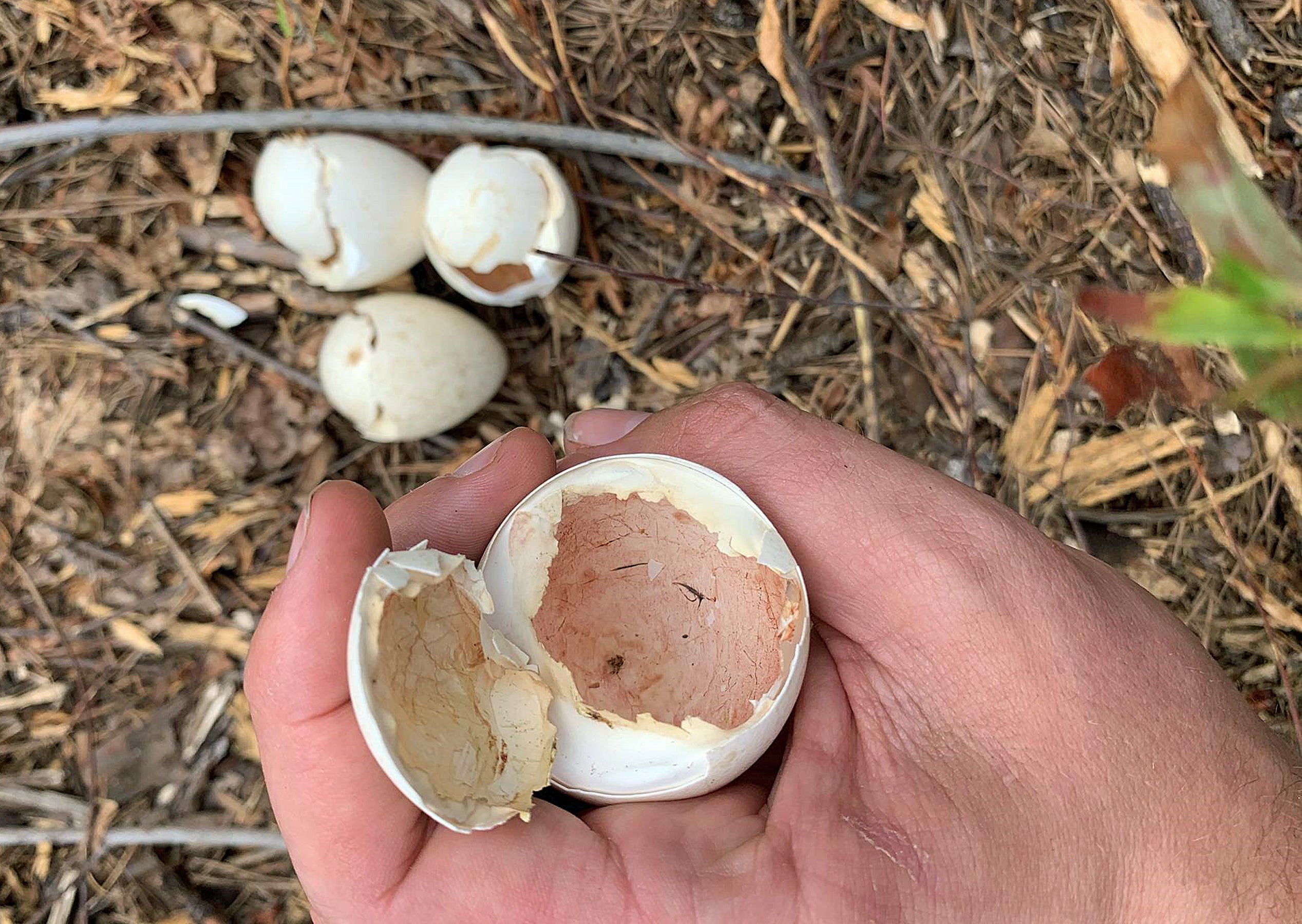By DAVID RAINER, Alabama Department of Conservation and Natural Resources
Logging crews in Alabama have wildlife encounters on a regular basis as they harvest one of the state’s renewable resources. One crew from Sullivan Timber Company was busy cutting timber in north Mobile County when the loggers spotted something worthy of protection – a turkey hen sitting on a clutch of 10 eggs.
Dustin Phillips, the procurement manager for Canfor Southern Pine’s Mobile mill, had hired the crew to harvest the timber on the tract near Gulfcrest. Crew foreman Brent Weaver spotted the turkey nest while he was running the feller-buncher and sent Phillips a photo on May 8.
“I called Brent and asked him what he was going to do,” said Phillips, an avid turkey hunter. “He said, ‘I’m going to flag around it.’ He flagged an area about 20 by 20. They kept working around her, felling these trees, and she would just sit there on the nest. They were riding all around the area that was flagged, and she did not move one time.
“I couldn’t believe that. I said, my gosh, she is committed to that nest. I cruise timber and have busted hens off the nest all the time. This time, they were cutting all around her, and she stayed put.”
Weaver, who also loves to hunt turkeys, soon learned the hen’s daily schedule, sitting on the nest until about 4 p.m., when she would walk to a nearby mudhole for a drink of water. She would then stroll through a nearby greenfield to forage for seeds and insects. By the time the crew arrived the next morning, the hen was back on the nest.
“When we weren’t cutting and skidding right next to the nest, we were loading trucks 100 yards away,” Phillips said. “The loader operator would call on the radio and say, ‘Here she is. She’s getting some water.’ I guess she got used to the equipment. I was just pretty surprised. I’d always been told that if you bump a hen off the nest, she might not come back. I don’t know if that’s true. Evidently it’s not, at least to this hen anyway. I just thought it was neat how she stayed there with all this loud logging equipment.
“That’s what the crew talked about. They kept track of her every day.”








